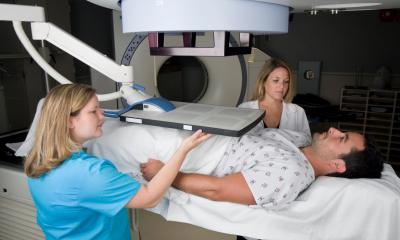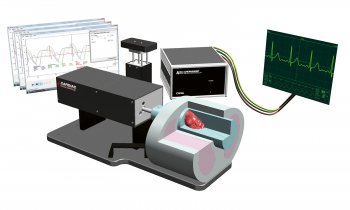Integrated 3-D Imaging Facilitates Human Face Transplantation
By combining conventional medical imaging with some of the same 3-D modeling techniques used in Hollywood blockbusters, researchers are offering new hope to victims of serious facial injuries. Results of a new study on human face transplantation, led by Darren M. Smith, M.D., plastic surgery resident at the University of Pittsburgh Medical Center (UPMC), were presented today at the annual meeting of the Radiological Society of North America (RSNA).
Devastating injuries or defects of the face are extremely challenging, if not impossible, to satisfactorily reconstruct by traditional surgical techniques. In face transplantation, facial tissue from a donor is transferred to reconstruct the defect, restore essential life-sustaining functions—such as breathing, chewing and speaking—and, above all, reestablish normal human appearance.
"This surgery is for patients with devastating injuries to the face, who have lost their ability to smell, eat and engage socially and have no other conventional treatment options," said Vijay S. Gorantla, M.D., Ph.D., administrative medical director of the Reconstructive Transplantation Program at UPMC.
Clearly defining and understanding the complex tissue deficits and defects that accompany devastating facial injuries like electric burns, blast wounds and accidental trauma are critical for both technical success and objective analysis of the return of function after face transplantation.
Medical imaging plays a major role in the entire spectrum of face transplantation, ranging from patient selection, donor and recipient surgical planning, and postoperative assessment of returning motor and sensory function. Face transplantation is a lengthy, complicated procedure that involves reconstruction of multiple tissues—such as skin, muscle, blood vessels, nerves and bone—by a team of surgeons.
Currently, to prepare for facial transplantation, plastic or plaster models are first created based on 3-D CT or angiographic images or reconstruction. Following this, mock cadaveric dissections are performed to allow surgeons to plan for the donor and recipient surgeries. MRI and other imaging exams may also be used to provide supplemental information.
By combining information from multiple imaging exams and creating a sophisticated 3-D computer model, the researchers for this study were better able to assess the facial structure and contours, the underlying bone, muscles, nerves and vessels, as well as the extent of damage.
download full-size photo
Darren M. Smith, M.D.Using sophisticated computer modeling software, Drs. Smith and Gorantla, along with Joseph Losee, M.D., integrated information from 3-D CT, CT angiography, MRI and high-definition tractography to create a 3-D model of the patient's head and neck anatomy. The same type of modeling technology is often used in movies to animate computer-generated characters with detailed three-dimensional human features and realistic expressions.
"We have integrated data from multiple imaging sources into a single 3-D representation that allows for real-time user interaction and modification," Dr. Smith said. "In assessing eligibility for this procedure, it is critical to understand whether the patient has enough blood vessels and bone structure to support new facial tissue. This 3-D modeling helps us customize the procedure to the patient's individual anatomy so that the donor tissue will fit like a puzzle piece onto the patient's face."
Using computer modeling, the team also overlaid the patient model with a polygon mesh of a generic human face and then customized it to the recipient facial anatomy. Dr. Smith said the ability to manipulate this 3-D facial envelope over the residual face model allows the entire surgical team to participate in planning exactly where bone, blood vessel and nerves will be cut and connected, as well as to evaluate the outcomes of reconstructive transplantation, including nerve regeneration within the transplanted facial tissue.
"The goal of face transplantation is not just structural," Dr. Gorantla said. "It is about restoring function, so that patients are once again able to chew their food, smile and regain the most important aspect of a normal face — to look human."
# # #
29.11.2011











